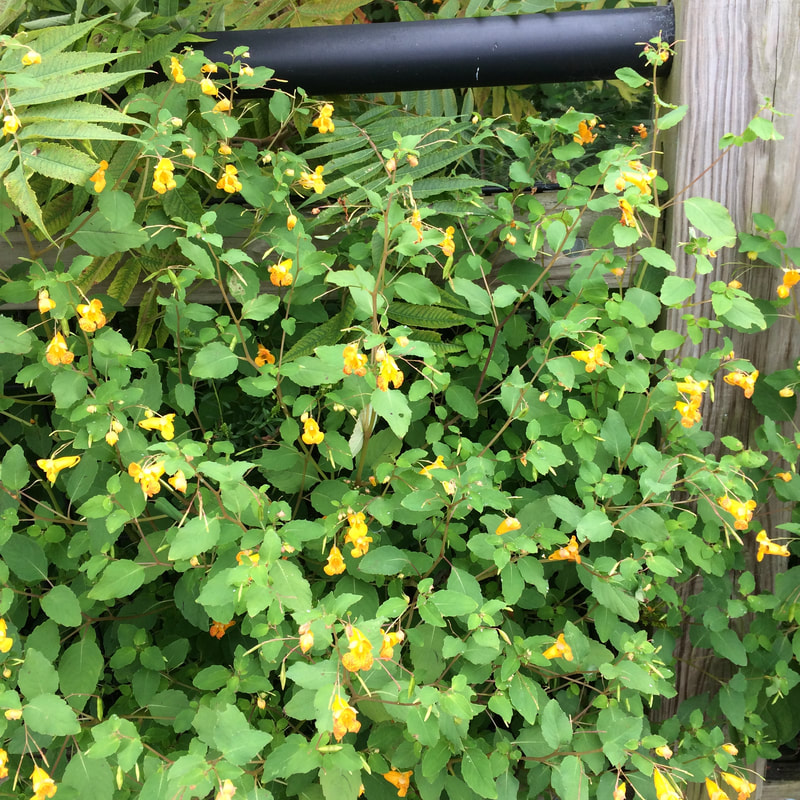|
Photo and article by Donna Iverson There are a few popular Midwest native annual flowers you’ve probably familiar with, like sunflowers and black-eyed Susans. But there are a lot that you have probably never heard of that are under appreciated. They have names like partridge pea, daisy fleabane, wild cucumber vine, sneezeweed, American basket flower, lemon bergamot, blanket flower, snow on the mountain, blue-eyed Mary, and my favorite, spotted jewelweed. Don’t let their names deter you. These native plants offer many advantages to gardeners. They will often grow where nothing else will, need little water or fertilizer, and deter invasive weeds. Also, they are tough and replant themselves year after year. In his book Native Plants of the Midwest, horticulturist Alan Branhagen, goes so far as to call them “earth healers.” When land is disturbed, they are the first plants to show up and they pave the way for the more widely recognized perennials, he writes. Native annuals are also beautiful, like jewelweed with its blue-green leaves and spotted yellow-orange flowers that bloom all summer and into fall. It is native across the entire Midwest and found where soil is damp, especially near wetlands. It is also found in meadows, woods, and ditches. Another name for jewelweed is “touch me not.” When the lip-shaped flowers are touched or brushed against, the seeds burst out. This is how the plant propagates itself and entertains children. A pollinator plant popular with bees, jewelweed also provides food for grouse and pheasants. Finding native annual plant seeds in seed catalogs is difficult, although the Seeds of Change catalog has a few. As native annual flowers become more popular, more seed catalogs can be expected to expand their offerings to include these flowers. Of course, you can collect the seeds yourself in the fall before the first frost. Whether collected or purchased, the seeds will need cold stratification, which is a fancy word for needing to be refrigerated for a few months before they are planted in the spring. There are two varieties of native jewelweed, Impatiens capensis (orange jewelweed) and Impatiens pallida (yellow jewelweed). These two varieties refer to the color of the flowers. While experienced foragers will tell you that the flowers, leaves, young shoots and seeds of jewelweed are edible, they must be boiled in at least one change of water, to remove high levels of calcium oxalate. On the medicinal side, jewelweed is widely known as a treatment for poison ivy rash. Ironically, Jewelweed often grows near poison ivy so beware of that when you spot it. Herbalists recommend you break off a stem and rub the sap on the affected area. So next spring, bypass those petunias and marigolds, and consider a native annual instead.
0 Comments
Your comment will be posted after it is approved.
Leave a Reply. |
Archives
April 2024
Categories |

 RSS Feed
RSS Feed